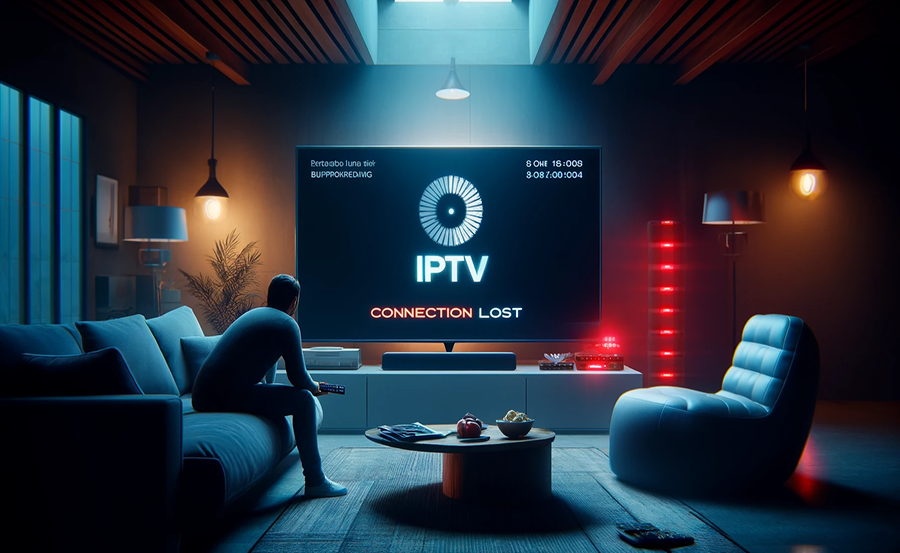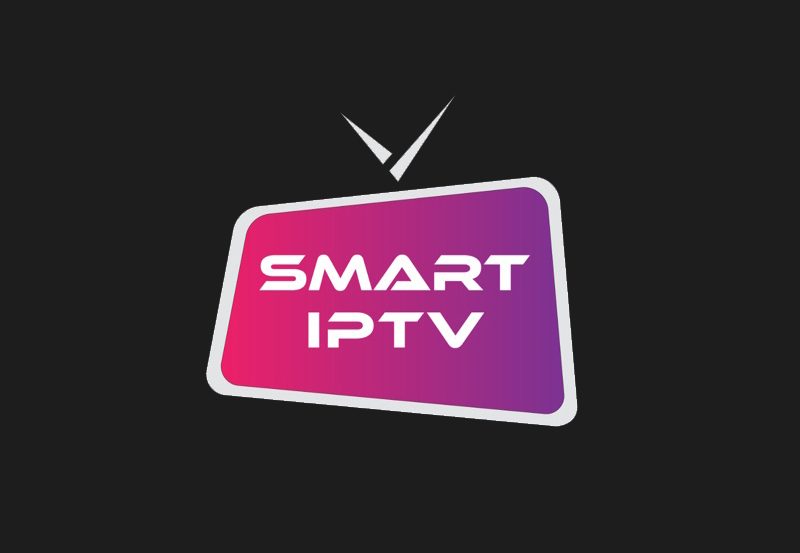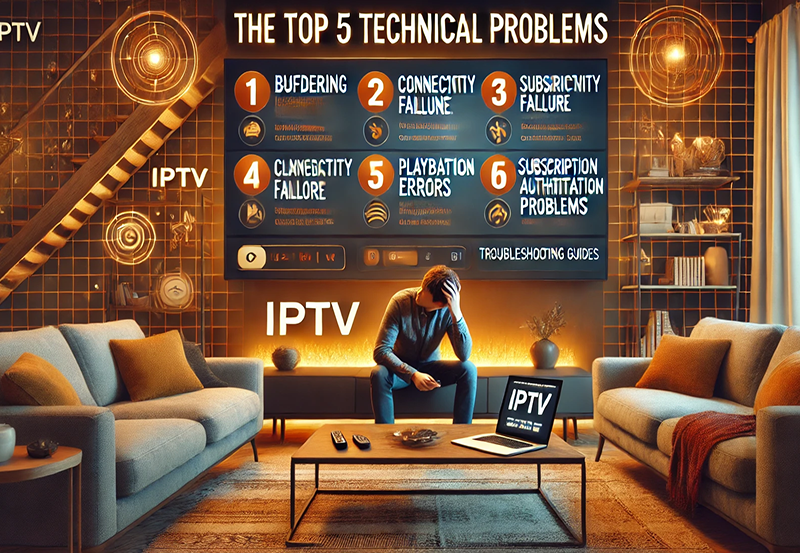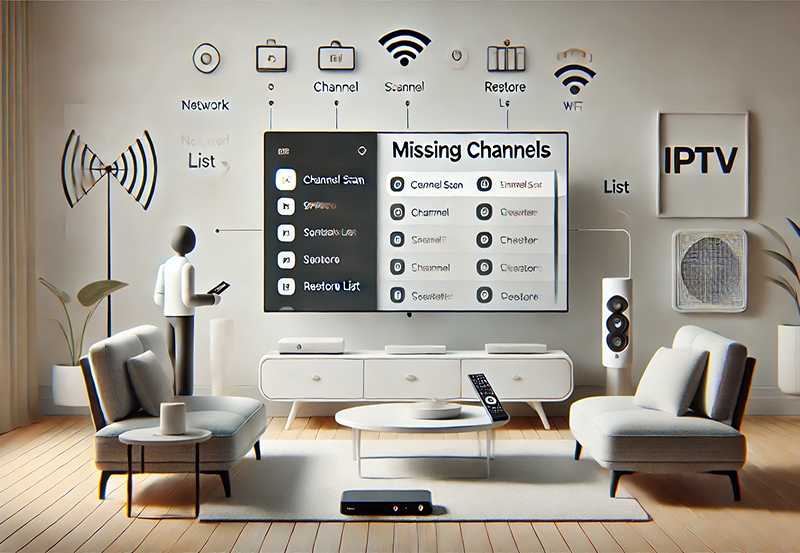In the ever-evolving realm of digital entertainment, IPTV has emerged as a captivating alternative to traditional television. As more viewers shift to this innovative service, the frustrations accompanying constant disconnections threaten to mar the experience. You’ve secured an IPTV subscription, eager to explore what IPTV for beginners has to offer. Yet, disruptive connection drops can hinder your ability to fully enhance your viewing pleasure. This article unpacks the common causes behind IPTV disconnections and provides pragmatic solutions to stabilize your streaming journey.
Understanding IPTV: A Quick Overview
To tackle disconnections effectively, it’s crucial to grasp what IPTV entails. IPTV, short for Internet Protocol Television, delivers television content via the Internet rather than conventional cable or satellite formats. The allure of IPTV lies in its ability to stream live television, movies, and on-demand content directly to your devices.
Today’s world is all about flexibility and choice. IPTV empowers viewers by offering a diverse range of channels and content at the touch of a button. However, its reliance on internet connectivity introduces challenges unique to online streaming. Recognizing these facets can help minimize disruptions and optimize your overall experience.
The Vital Role of Internet Connection
Arguably, the heart of IPTV lies in the quality of your internet connection. A robust, consistent broadband connection is pivotal for uninterrupted streaming. Speed and stability carry immense weight in ensuring seamless IPTV service.
Before diagnosing specific issues, assess your current internet plan. Is it equipped to handle high-definition content? Herein lies a common misconception: just because your internet works well for browsing doesn’t necessarily mean it’s cut out for streaming live television.
Testing Internet Speed
Begin by performing a speed test. Several online platforms offer free speed tests to measure your connection’s capabilities. Look for a minimum download speed of 25 Mbps if HD content is important to you. For UHD or 4K, consider speeds above 50 Mbps. Lower speeds can contribute to buffering and frequent disconnects.
- Visit a reliable speed test website.
- Run the test while connected to the same network as your IPTV device.
- Compare results with your internet service plan to ensure you’re receiving what you’re paying for.
Should the numbers fall short, it might be time to discuss upgrades with your internet provider.
Common Causes for IPTV Disconnections
Having established the necessity of a strong connection, let’s explore specific reasons IPTV services may falter. Applying logical troubleshooting can often prevent further interruptions and restore viewing experiences efficiently.
Bandwidth Limitations
Bandwidth availability is a key factor influencing IPTV reliability. Concurrent users or devices overloading the network can quickly deplete available bandwidth, causing streaming interruptions. It’s a scenario that plays out frequently in family homes or shared accommodations.
- Simultaneous device usage: Multiple devices streaming high-definition content or engaging in bandwidth-
intensive activities. Buy 1 Year IPTV Subscription and Enjoy Unlimited Conten - Background applications: Hidden services and applications consuming bandwidth unknowingly.
Proactively managing devices connected to your network can avoid these pitfalls. Encourage responsible usage or set timed limitations where feasible.
Router Configuration and Placement
Your router’s settings and physical location heavily influence signal strength. Placing the router in an open, centralized location within your home can minimize interference and maximize coverage.
Optimizing Wi-Fi Configuration
Beyond placement, explore specific router settings optimized for IPTV streaming.
- Update firmware: Ensure your router is running the latest firmware for improved performance.
- QoS settings: Quality of Service (QoS) settings can prioritize IPTV traffic over other activities.
- Frequency bands: Using the 5 GHz band, albeit shorter in range, helps reduce congestion encountered on the 2.4 GHz band.
By strategically altering these settings, you might find a noticeable improvement in streaming consistency.
ISP Throttling: A Hidden Culprit
Internet Service Providers (ISPs) occasionally impose data throttling, which slows down internet speeds during high-demand periods. This detrimental practice wrecks streaming performance and goes unnoticed more often than not.
Detecting Throttling
Learning to identify and combat ISP throttling can safeguard your IPTV experience. Sudden drops in speed, albeit beyond peak hours, may ring alarm bells. Tools like VPNs can circumvent throttling by encrypting data and disguising traffic patterns.
Choosing a VPN
Not all VPNs are suitable for mitigating throttling. Select one boasting high-speed servers, robust security features, and positive user reviews.
- Server coverage: An expansive network decreases latency by offering proximity-proximate servers.
- Low logging policy: Privacy remains preserved with minimal data retention.
- Trial periods and guarantees: Explore VPNs risk-free to gauge compatibility with your IPTV service.
A well-chosen VPN can prove transformative, ensuring uninterrupted viewing sessions.
Device-Related Challenges
Beyond network concerns, technical limitations originating from devices themselves mustn’t be overlooked. Outdated hardware or software bugs often surface as barriers to stable streaming.
Checking Device Compatibility
Modern IPTV services are designed to be compatible across many devices, from smart TVs to tablets. However, older models may struggle to keep up, particularly with UHD content.
Prioritize investing in contemporary hardware that aligns with your service’s specifications and streaming demands. Keeping devices updated with the latest software patches and applications is equally pivotal.
Recognizing and Resolving Software Bugs
Software glitches and compatibility issues can sneak in undetected. Regularly audit your setup by:
- Ensuring your IPTV app is updated to the latest version.
- Removing unnecessary apps that could cause conflicts.
- Restarting or resetting your device to clear temporary bugs and cache.
Through these actions, significant improvements in your streaming quality can be achieved.
Network Interference: A Silent Issue
External factors, like interference from nearby networks, can also play havoc with your IPTV stream. Understanding these potential disruptors can bring clarity and enhance control.
Identifying Interference Sources
External obstacles fall into two categories: physical blockages and electrical interference. Thick walls, microwave ovens, and Bluetooth devices commonly trigger disruptions.
Minimizing Interference
Steps to alleviate interference include:
- Repositioning the router to avoid physical barriers.
- Utilizing wired connections to bypass wireless congestion entirely.
- Experimenting with different router channels to dodge overlapping signals.
Selecting optimal settings and placements can greatly diminish the frequency of interruptions encountered.
Customer Support and Technical Assistance
Despite taking preventive measures, tackling technical support occasionally becomes necessary. Establishing proactive communication channels with service providers ensures swift resolutions for quandaries that demand external intervention.
Contacting Your IPTV Provider
IPLTV services often extend robust customer support systems designed to resolve queries expeditiously. Familiarize yourself with available support avenues, including live chats, phone support, or emails. Prompt reporting improves response times and conveys issues before they escalate further.
Documenting Issues
Accurate documentation benefits problem-solving endeavors. When contacting support, offer substantial details regarding your subscription package, device setup, and streaming environment. Transparent information narrows down sources offering potentially swift resolutions. Take note of solution timelines and past interactions to avoid redundancy.
Implementing Long-Term Enhancements
Future-proofing your IPTV setup involves strategic enhancements designed to forestall imminent hurdles proactively. Long-term strategies encompass revisiting service plans regularly or investing in more advanced networking equipment.
Investing in Future Technology
Staying abreast of technological advancements ensures resilience. This involves seeking trusted routers optimized for seamless streaming while contemplating mesh networks to address range issues in larger homes. Tailor service plans to adapt as family dynamics evolve, encompassing greater bandwidth or additional features relevant to emerging needs.
Continual Learning and Adaptation
Complacency often stifles advancement. Proactive learning—be it through blogs, forums, or provider newsletters—keeps you updated with IPTV industry developments. This fosters an understanding of trends or changes that bear germane learnings for optimizing experiences further.
Engage with the IPTV Community
An often-overlooked resource is the thriving community of IPTV enthusiasts. Many users share experiences, problems, and solutions in forums and discussion groups, forming a robust support ecosystem. Engaging with this community can uncover hidden tips or lesser-known tweaks to refine your service.
Online Forums and Support Groups
Participating in IPTV-focused forums or groups on platforms like Reddit or Facebook connects you to a wealth of shared knowledge. Here, common challenges and innovative solutions are discussed, often providing more personalized advice than conventional troubleshooting guides.
Contributing to Knowledge Sharing
As you gain expertise, reciprocate by assisting fellow IPTV users. Sharing your insights promotes knowledge circulation and enriches the community. Contributing not only solidifies your understanding but also fortifies the collective resource pool available to all.
A Fresh Approach to Viewing
Your IPTV experience is a journey; understanding and adapting are keys to achieving enhanced viewing pleasure. Embracing change, scrutinizing setups, and engaging with fellow enthusiasts empower you to refine your viewing setups continually.
As you explore the realm of IPTV, remember: perfection is a myth, but progress isn’t. The consistent pursuit of improvement transforms occasional frustrations into a fulfilling entertainment journey, unlocking the boundless potential of IPTV.
Frequently Asked Questions (FAQ)

Why does my IPTV keep buffering?
Buffering often occurs due to inadequate internet speed or bandwidth congestion. Ensure your internet connection meets the speed requirements for your intended streaming quality. Additionally, consider optimizing your network by prioritizing traffic through router settings or reducing simultaneous device usage.
How can I improve my IPTV stream stability?
Strengthen your internet connection by placing the router optimally and utilizing the 5 GHz frequency band for less interference. Regular updates to your IPTV app and maintaining contemporary hardware compatibility also enhance stream stability.
Is using a VPN beneficial for IPTV streaming?
A VPN can help bypass ISP throttling and maintain viewer data privacy. Selecting a high-speed VPN with robust security measures can alleviate throttling issues and improve streaming consistency.
Can older devices cause IPTV issues?
Yes, older devices may struggle to handle high-definition or UHD content, leading to interruptions. Upgrading hardware and ensuring software compatibility are pivotal for optimal IPTV streaming.
What should I do if my IPTV provider is unresponsive?
If your IPTV provider remains unresponsive, consult forums and community groups for advice. Document all interactions with your provider for reference and explore potential legal recourse if the service does not match the promised standards.
How do I identify if my ISP is throttling IPTV services?
Indicators of throttling include significant speed reductions during peak hours. Comparing speed test results with a VPN enabled and disabled can highlight possible throttling. Contacting your ISP for clarification or seeking third-party tools that detect throttling are also viable options.
Are there community resources to help with IPTV setup?
Yes, engaging with IPTV-focused forums and social media groups provides valuable insights and support. Participating in these communities fosters knowledge exchange and access to diverse troubleshooting strategies.
Step-by-Step Guide: Fixing Missing Channels in XMLTV Guides for IPTV





